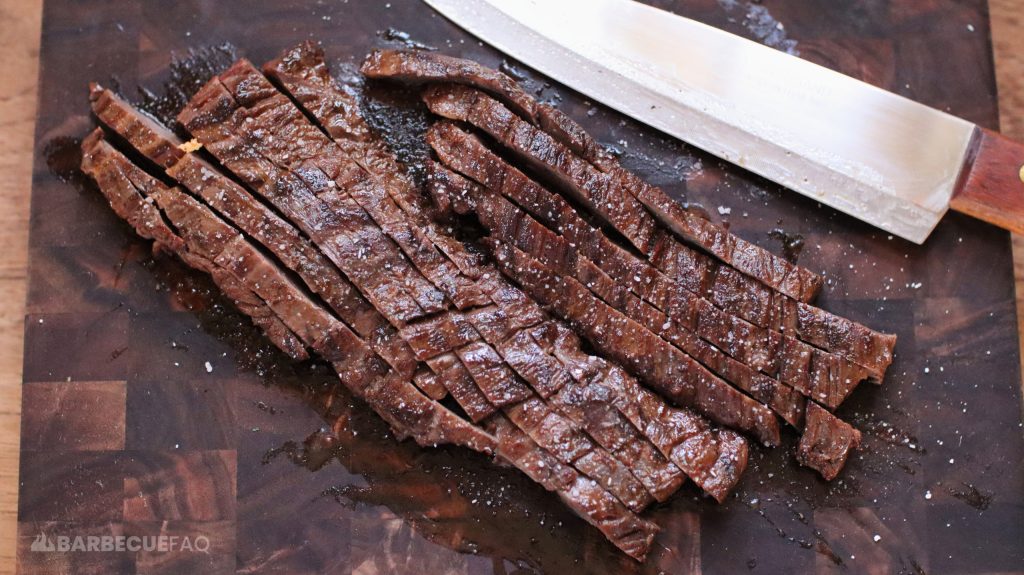1. Look at the Flank Steak and Determine how the “Lines” are Oriented
The grain are the “lines.”
On the flank steak below the lines are running horizontally.

2. Since the Grain or “Lines” are running Horizontally
You’d slice vertically.

Doing so slices the meat against the grain.

That’s all there is to it – identify the grain and slice perpendicular to it.
Note: This grain direction does not change when the flank steak is cooked.
Technically, you could further minimize fiber length by slicing on a bias (knife angled at 45 degrees), which also improves presentation.
However, this is less important than simply slicing against the grain.
Why Bother Slicing Against the Grain?
It makes chewing easier.
Cutting flank steak with the grain leaves the muscle fiber strands in tact – resulting in tough meat.
Cutting against the grain effectively shortens the fiber lengths – making it more tender.
Are Grill Marks the Same as Meat Grain?
No.
This is a common mistake that people make when looking at meat grain.
Sear and/or grill marks have nothing to do with the grain structure of meat.
Sear marks are the result of the maillard reaction of amino acids and reducing sugars and are completely independent of grain structure.
Meaning, sear marks can form in whatever direction the meat is placed on the grill grates or cooking surface.




